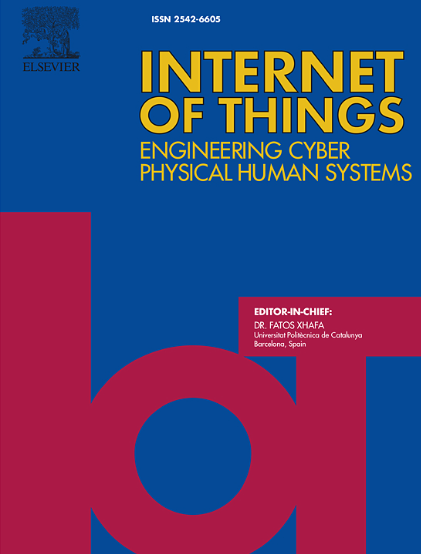Internet-of-Mirrors (IoM) for connected healthcare and beauty: A prospective vision
IF 6
3区 计算机科学
Q1 COMPUTER SCIENCE, INFORMATION SYSTEMS
引用次数: 0
Abstract
With the shift towards smart objects and automated services in many industries, the health and beauty industries are also becoming increasingly involved in AI-driven smart systems. There is a rising market demand for personalised services and a need for unified platforms in many sectors, specifically the cosmetics and healthcare industries. Alongside this rising demand, there are two major gaps when considering the integration of autonomous systems within these sectors. Firstly, the existing smart systems in the cosmetics industry are limited to single-purpose products and the employed technologies are not widespread enough to support the growing consumer demand for personalisation. Secondly, despite the rise of smart devices in healthcare, the current state-of-the-art services do not fulfil the accessibility demands and holistic nature of healthcare. To bridge these gaps, we propose integrating autonomous systems with health and beauty services through a unified visual platform coined as the Internet-of-Mirrors (IoM), an interconnected system of smart mirrors with sensing and communication capabilities where the smart mirror functions as an immersive visual dashboard to provide personalised services for health and beauty consultations and routines. We aim to present an overview of current state-of-the-art technologies that will enable the development of the IoM as well as provide a practical vision of this system with innovative scenarios to give a forward-looking vision for assistive technologies. We also discuss the missing capabilities and challenges the development of the IoM would face and outline future research directions that will support the realisation of our proposed framework.
用于联网医疗和美容的镜联网(IoM):前景展望
随着许多行业向智能物品和自动化服务转变,健康和美容行业也越来越多地涉足人工智能驱动的智能系统。市场对个性化服务的需求不断增长,许多行业都需要统一的平台,特别是化妆品和医疗保健行业。在需求不断增长的同时,这些行业在考虑整合自主系统时还存在两大差距。首先,化妆品行业现有的智能系统仅限于单一用途的产品,所采用的技术也不够广泛,不足以支持消费者日益增长的个性化需求。其次,尽管智能设备在医疗保健领域兴起,但目前最先进的服务并不能满足医疗保健的无障碍需求和整体性。为了弥补这些差距,我们建议通过一个统一的视觉平台将自主系统与健康和美容服务整合在一起,该平台被称为镜联网(IoM),是一个由具有传感和通信功能的智能镜子组成的互联系统,其中智能镜子的功能是作为一个沉浸式视觉仪表板,为健康和美容咨询及日常活动提供个性化服务。我们的目标是概述当前最先进的技术,这些技术将促进物联网的发展,并通过创新方案提供该系统的实用愿景,从而为辅助技术提供前瞻性愿景。我们还讨论了物联网发展所面临的能力缺失和挑战,并概述了未来的研究方向,以支持实现我们提出的框架。
本文章由计算机程序翻译,如有差异,请以英文原文为准。
求助全文
约1分钟内获得全文
求助全文
来源期刊

Internet of Things
Multiple-
CiteScore
3.60
自引率
5.10%
发文量
115
审稿时长
37 days
期刊介绍:
Internet of Things; Engineering Cyber Physical Human Systems is a comprehensive journal encouraging cross collaboration between researchers, engineers and practitioners in the field of IoT & Cyber Physical Human Systems. The journal offers a unique platform to exchange scientific information on the entire breadth of technology, science, and societal applications of the IoT.
The journal will place a high priority on timely publication, and provide a home for high quality.
Furthermore, IOT is interested in publishing topical Special Issues on any aspect of IOT.
 求助内容:
求助内容: 应助结果提醒方式:
应助结果提醒方式:


